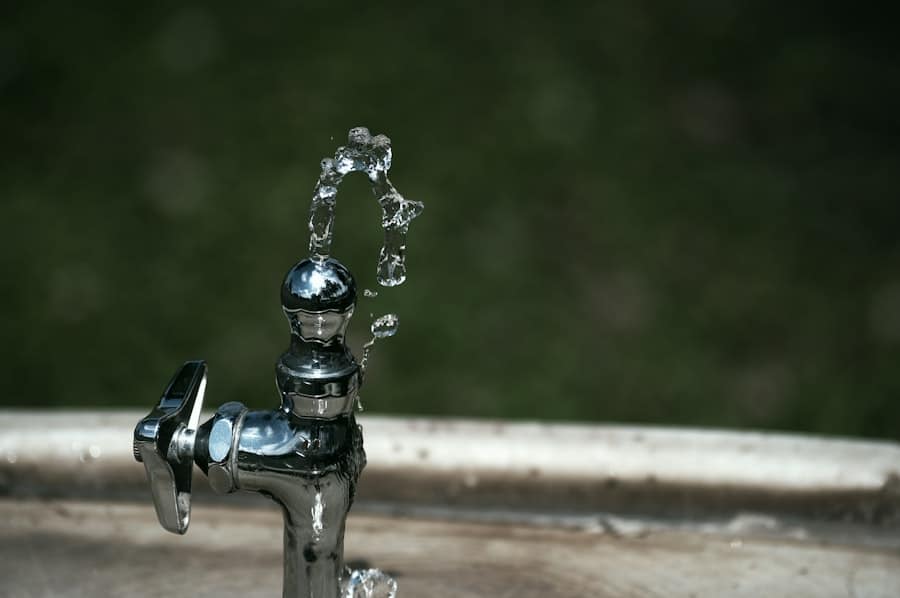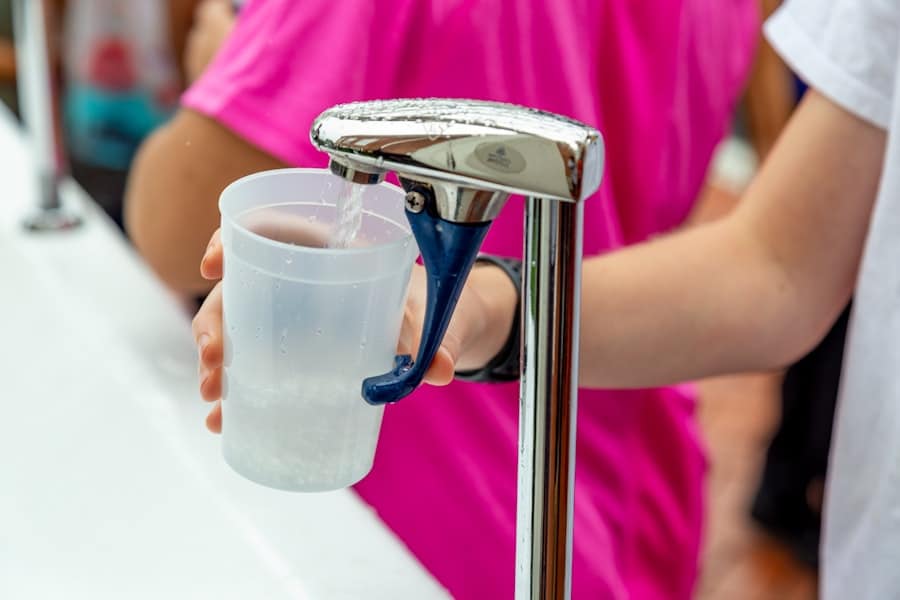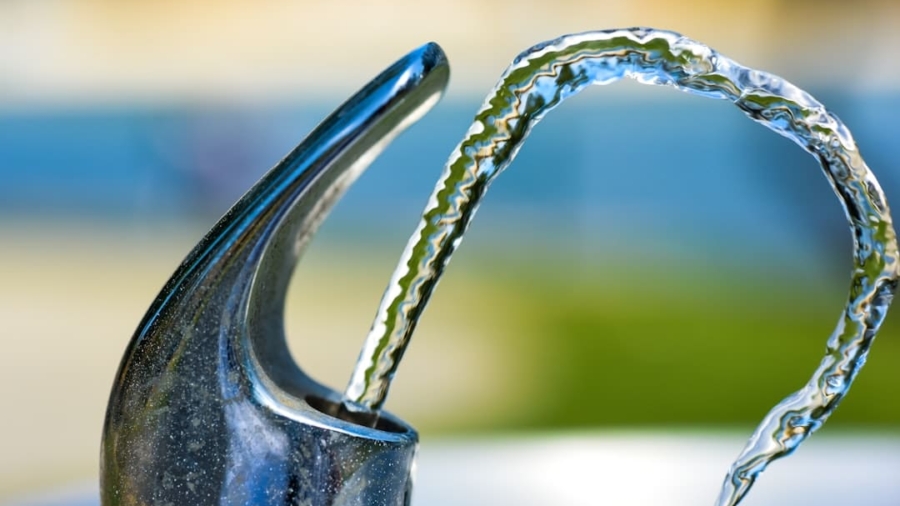The Internet of Things (IoT) has emerged as a transformative force across various sectors, revolutionizing how we interact with our environment. At its core, IoT refers to the network of interconnected devices that communicate and exchange data over the internet. This technology has found significant applications in numerous fields, including healthcare, agriculture, and smart cities.
One of the most pressing areas where IoT is making a substantial impact is in water usage tracking. As global water scarcity becomes an increasingly critical issue, the ability to monitor and manage water consumption effectively is paramount. IoT devices can provide real-time insights into water usage patterns, enabling households and businesses to make informed decisions about their consumption.
Water is a finite resource, and its management is essential for sustainability. Traditional methods of tracking water usage often rely on manual readings and estimations, which can lead to inaccuracies and inefficiencies. IoT technology offers a solution by automating the monitoring process, providing precise data that can be analyzed to optimize water usage.
By integrating sensors and smart meters into plumbing systems, users can gain visibility into their water consumption habits, identify areas for improvement, and contribute to broader conservation efforts. This article delves into the myriad benefits of using IoT for tracking household water usage, the devices available for monitoring, and the implications for water conservation.
Key Takeaways
- Introduction to IoT and water usage tracking:
- IoT technology allows for the monitoring and tracking of water usage in households through connected devices and sensors.
- Benefits of using IoT for tracking household water usage:
- IoT enables real-time monitoring of water consumption, leading to better awareness and conservation efforts.
- It helps in identifying water wastage and leaks, leading to cost savings and environmental benefits.
- IoT devices for monitoring water usage:
- Smart water meters, flow sensors, and connected appliances are examples of IoT devices used for monitoring water usage in households.
- How IoT technology helps in identifying water leaks:
- IoT devices can detect abnormal water usage patterns and send alerts to users, enabling timely detection and repair of leaks.
- Using IoT data to improve water conservation habits:
- IoT data can provide insights into water usage patterns, enabling users to make informed decisions and adopt water-saving habits.
- Integrating IoT with smart home systems for water management:
- IoT can be integrated with smart home systems to automate water usage control, such as adjusting irrigation systems based on weather forecasts.
- Challenges and limitations of using IoT for tracking water usage:
- Privacy and security concerns, initial setup costs, and compatibility issues with existing infrastructure are some challenges associated with IoT water usage tracking.
- Future trends in IoT technology for water usage tracking:
- Advancements in sensor technology, AI-driven analytics, and integration with smart city initiatives are expected to drive the future of IoT for water usage tracking.
Benefits of using IoT for tracking household water usage
The integration of IoT technology into household water management systems presents numerous advantages that extend beyond mere convenience. One of the most significant benefits is the ability to obtain real-time data on water consumption. Traditional water meters typically provide monthly readings, which can obscure daily usage patterns and lead to unexpected spikes in bills.
In contrast, IoT-enabled devices allow homeowners to monitor their water usage in real time, providing insights into daily habits and enabling them to adjust their consumption accordingly. This immediate feedback loop fosters a greater awareness of water usage, encouraging more responsible consumption practices. Moreover, IoT technology enhances the accuracy of water usage tracking.
Conventional meters can be prone to errors due to wear and tear or environmental factors that affect readings. Smart meters equipped with IoT capabilities are designed to provide precise measurements, reducing discrepancies and ensuring that users are billed accurately for their actual consumption. This accuracy not only benefits consumers but also aids utility companies in managing resources more effectively.
By having access to real-time data, utilities can better forecast demand, identify trends, and allocate resources more efficiently, ultimately leading to improved service delivery.
IoT devices for monitoring water usage

A variety of IoT devices are available for monitoring household water usage, each designed to cater to different needs and preferences. Smart water meters are among the most common devices used for this purpose. These meters connect directly to a home’s plumbing system and provide real-time data on water consumption through a user-friendly app or web interface.
Users can track their daily, weekly, or monthly usage patterns, set consumption goals, and receive alerts when they exceed predefined thresholds. Some advanced models even offer predictive analytics, helping homeowners anticipate future usage based on historical data. In addition to smart meters, there are also smart irrigation systems that utilize IoT technology to optimize outdoor water usage.
These systems employ soil moisture sensors that monitor the moisture levels in the ground and adjust irrigation schedules accordingly. By ensuring that plants receive the right amount of water at the right time, these systems not only conserve water but also promote healthier plant growth. Furthermore, leak detection sensors are becoming increasingly popular in households.
These devices can be installed in areas prone to leaks, such as basements or near appliances like washing machines. When a leak is detected, users receive immediate notifications on their smartphones, allowing them to take swift action before significant damage occurs.
How IoT technology helps in identifying water leaks
One of the most critical applications of IoT technology in water management is its ability to detect leaks promptly. Water leaks can lead to substantial financial losses and contribute significantly to water wastage. Traditional methods of leak detection often involve manual inspections or relying on homeowners to notice unusual spikes in their water bills.
However, IoT devices can continuously monitor water flow and pressure within a plumbing system, identifying anomalies that may indicate a leak. For instance, smart leak detectors use acoustic sensors to listen for the sound of dripping or flowing water in areas where it should not be present. When a leak is detected, these devices send alerts directly to the homeowner’s smartphone or connected device, enabling immediate action.
This proactive approach not only minimizes potential damage but also helps conserve water by addressing leaks before they escalate into more significant issues. Additionally, some advanced systems can provide detailed reports on leak locations and severity, allowing homeowners to prioritize repairs based on urgency.
Using IoT data to improve water conservation habits
The data generated by IoT devices plays a crucial role in fostering better water conservation habits among users. By providing detailed insights into individual consumption patterns, these devices empower homeowners to make informed decisions about their water usage. For example, users can analyze their daily routines and identify specific times when they consume more water than necessary—such as during long showers or excessive lawn watering.
Armed with this knowledge, they can implement changes that lead to more sustainable practices. Moreover, many IoT platforms offer gamification features that encourage users to compete against themselves or others in reducing their water consumption. By setting goals and tracking progress over time, individuals can cultivate a sense of accountability and motivation to conserve water.
Some platforms even provide tips and suggestions tailored to users’ specific habits, further enhancing their ability to make positive changes. This data-driven approach not only benefits individual households but also contributes to broader community efforts aimed at reducing overall water consumption.
Integrating IoT with smart home systems for water management

The integration of IoT technology with existing smart home systems represents a significant advancement in managing household resources effectively. Many modern homes are equipped with smart home ecosystems that allow users to control various devices from a single interface—be it through a smartphone app or voice commands via virtual assistants like Amazon Alexa or Google Assistant. By incorporating IoT-enabled water management devices into these ecosystems, homeowners can streamline their resource management efforts.
For instance, users can set up automated routines that adjust irrigation schedules based on weather forecasts or soil moisture levels detected by smart sensors. This integration ensures that outdoor watering occurs only when necessary, significantly reducing waste. Additionally, smart home systems can be programmed to alert users about potential leaks detected by IoT sensors while simultaneously shutting off the main water supply if necessary.
This level of automation not only enhances convenience but also provides peace of mind knowing that potential issues are being monitored continuously.
Challenges and limitations of using IoT for tracking water usage
Despite the numerous advantages associated with using IoT technology for tracking water usage, several challenges and limitations must be addressed for widespread adoption. One significant concern is data privacy and security. As with any connected device, there is a risk that sensitive information could be compromised if proper security measures are not implemented.
Homeowners may be hesitant to adopt IoT solutions if they fear unauthorized access to their data or potential cyberattacks on their home networks. Another challenge lies in the interoperability of different devices and platforms. The IoT landscape is vast and diverse, with numerous manufacturers producing devices that may not communicate effectively with one another.
This lack of standardization can create barriers for consumers looking to integrate multiple IoT solutions into their homes seamlessly. Additionally, the initial cost of purchasing and installing smart water management systems may deter some homeowners from making the investment despite the long-term savings associated with reduced water bills.
Future trends in IoT technology for water usage tracking
Looking ahead, several trends are likely to shape the future of IoT technology in the realm of water usage tracking. One promising development is the increasing use of artificial intelligence (AI) and machine learning algorithms in analyzing data collected from IoT devices. These technologies can enhance predictive analytics capabilities, allowing homeowners and utility companies to forecast future water demand more accurately based on historical patterns and environmental factors.
Furthermore, as climate change continues to impact global weather patterns, there will be a growing emphasis on developing adaptive irrigation systems that respond dynamically to changing conditions. For example, future smart irrigation systems may incorporate weather forecasting data alongside soil moisture readings to optimize watering schedules automatically based on predicted rainfall or temperature fluctuations. Additionally, advancements in sensor technology will likely lead to more affordable and accessible IoT solutions for tracking water usage.
As production costs decrease and technology becomes more widespread, it is expected that smart meters and leak detection devices will become standard features in new homes rather than optional upgrades. In conclusion, the integration of IoT technology into household water management presents an exciting opportunity for improving efficiency and promoting conservation efforts. As these technologies continue to evolve and become more accessible, they hold the potential to play a pivotal role in addressing global water challenges while empowering individuals to take control of their consumption habits.


